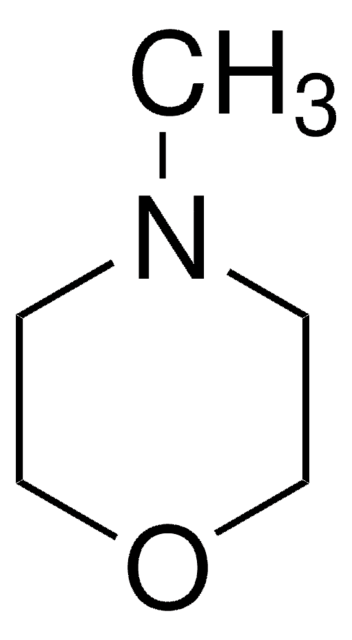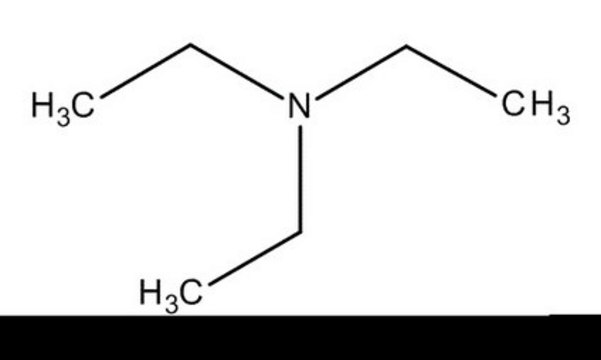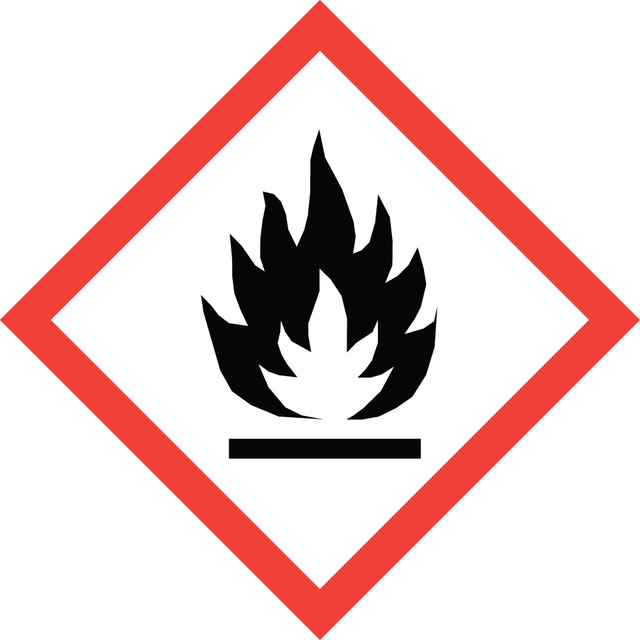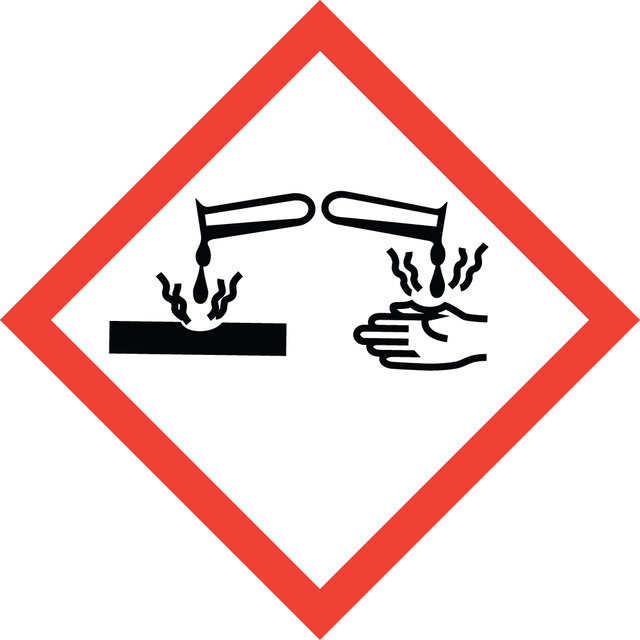8.05894
4-Methylmorpholine
for synthesis
Synonym(s):
4-Methylmorpholine, NMM, N-Methylmorpholine
About This Item
synthesis grade
Recommended Products
grade
for synthesis
synthesis grade
Quality Level
vapor pressure
23.5 hPa ( 20 °C)
Assay
≥98% (GC)
form
liquid
autoignition temp.
165 °C (DIN 51794)
potency
1960 mg/kg LD50, oral (Rat)
1240 mg/kg LD50, skin (Rabbit)
expl. lim.
2.1 % (v/v)
dilution
(for synthesis)
pH
10.6 (20 °C, 50 g/L in H2O)
bp
112-114 °C/1013 hPa
mp
-66 °C
transition temp
flash point 12.5 °C (DIN 51755 Part 1)
density
0.92 g/cm3 at 20 °C
storage temp.
2-30°C
SMILES string
N1(CCOCC1)C
InChI
1S/C5H11NO/c1-6-2-4-7-5-3-6/h2-5H2,1H3
InChI key
SJRJJKPEHAURKC-UHFFFAOYSA-N
Application
- A precursor to prepare N-methylmorpholine N-oxide and 1-butyl-1-methylmorpholinium bromide ([BMmo][Br]), a monocation ionic liquid.
- A reactant to synthesize quaternary ammonium complexes applicable as complexing agents in redox flow batteries.
- A basic catalyst in the synthesis of thiobenzamides via Willgerodt-Kindler′s reaction.
- An activating agent to synthesize hyaluronic acid-based biopolymer for cosmetic, pharmaceutical, and nutraceutical applications.
Analysis Note
Density (d 20 °C/ 4 °C): 0.917 - 0.918
Identity (IR): passes test
Signal Word
Danger
Hazard Statements
Precautionary Statements
Hazard Classifications
Acute Tox. 4 Oral - Eye Dam. 1 - Flam. Liq. 2 - Skin Corr. 1B
Storage Class Code
3 - Flammable liquids
WGK
WGK 1
Flash Point(F)
53.6 °F - closed cup - DIN 51755 Part 1
Flash Point(C)
12 °C - closed cup - DIN 51755 Part 1
Certificates of Analysis (COA)
Search for Certificates of Analysis (COA) by entering the products Lot/Batch Number. Lot and Batch Numbers can be found on a product’s label following the words ‘Lot’ or ‘Batch’.
Already Own This Product?
Find documentation for the products that you have recently purchased in the Document Library.
Our team of scientists has experience in all areas of research including Life Science, Material Science, Chemical Synthesis, Chromatography, Analytical and many others.
Contact Technical Service








